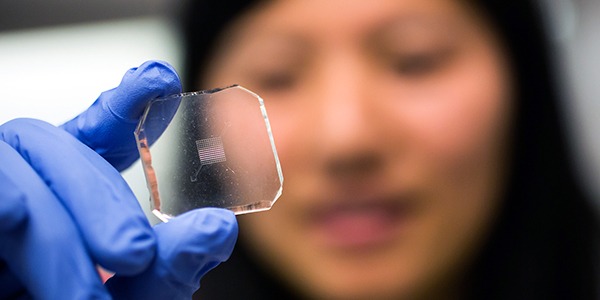Photo: Northwest Kidney Institute
Release originally appeared on UW Health Sciences NewsBeat on November 14, 2016.
A new Center for Dialysis Innovation was launched in early November.
The Center hopes to improve the health and well-being of people with advanced kidney disease as they initiate and receive dialysis treatment. Its vision is that future dialysis therapy will be complication-free and completely restorative of kidney health. Solutions to meet these goals will combine a comprehensive technical redesign of dialysis therapy with enhanced opportunities for patient well-being, independence and autonomy in self-care.
Dr. Jonathan Himmelfarb and Dr. Buddy Ratner co-direct the new center. Himmelfarb heads the Kidney Research Institute and is a professor of medicine, Division of Nephrology, at the Univeristy of Washington School of Medicine. Ratner oversees UWEB (Univeristy of Washington Bionengineered Materials) and is a professor of bioengineering and chemical engineering in the UW College of Engineering.
“We are working to upgrade and substantially improve the entire dialysis system to create safer, faster, more cost-effective dialysis,” said Himmelfarb. “By bringing physicians, engineers, scientists and kidney patients together, we can address each of the major kidney dialysis complications. The schedule we have set is aggressive, but it is essential that we bring new options to patients as soon as possible.”
Kidney disease affects more than 20 million American adults and is the ninth leading cause of death in the United States. While rates of death from heart disease, diabetes and cancer have all decreased signficiantly in recent years, mortality rates from kidney disease have stayed the same. Advanced kidney disease is fatal without the support of either dialysis therapy or a kidney transplant. Transplants are scarce and dialysis is the mainstay of treatment. Most patients dialyze in a chair at an outpatient center three times a week for four hours at a time, a schedule that can restrict their daily lives.
“Many patients suffer numerous complications,” said Ratner, “and on average, in the United States, survive just over three years on dialysis. In the developing world, survival is much worse. In many cases, dialysis is not even available, possibly leading to as many as 7 million deaths each year. We want to transform dialysis completely by giving patients more freedom and bringing dialysis to people around the globe.”
Investigators will systematically redesign each component of the dialysis circuit to create a device with low power and water requirements. Such a device would be worn by patients. This wearability would give them freedom to move while the device cleans their blood and filters waste around the clock.
The Center for Dialysis Innovation builds on the history of dialysis pioneers in Seattle. In 1960, Dr. Belding Scribner and his colleagues at the UW developed a shunt that made repeated dialysis treatments possible.
Visit the Center for Dialysis Innovation website to learn more.


